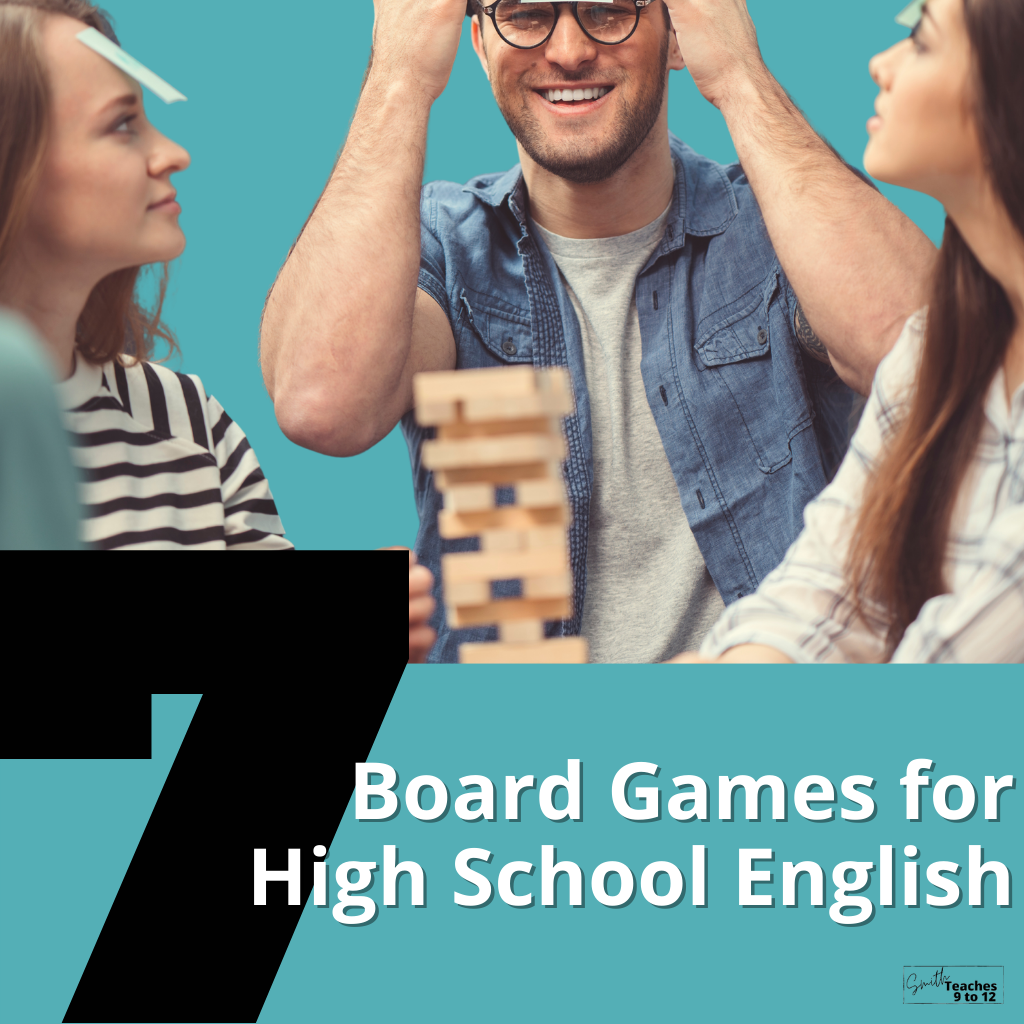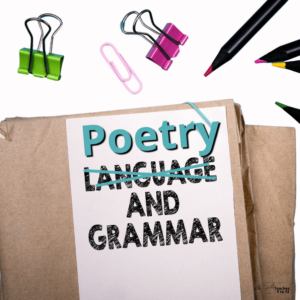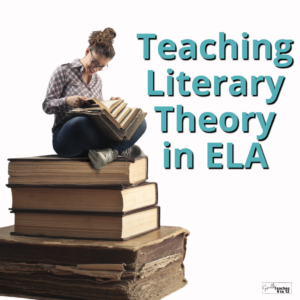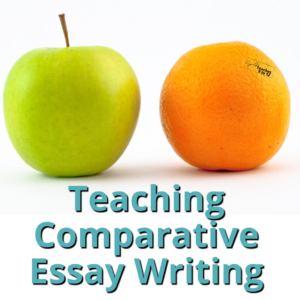Sharing is caring!
There is nothing I love more than a board game. What with the combination of competition, fun, and bonding, there is so much to love! I didn’t grow up in a board game playing family but at school every once in a while my teachers would bring out games for us to play and I loved those days even more than when they wheeled in the TV/VCR combo! A game of Guess Who? Yes, please! Scrabble? For sure!
So when I became a teacher, I vowed to make board games part of my classroom options. And if there is ever a time to infuse more joy into our classrooms, THIS IS IT! So board games for high school English it is!
I love to incorporate gamified lessons into my classroom but sometimes nothing will match the joy with a good board game or a variation of it!
Remember sometimes it’s okay to have some downtime in class! Students stressed with exams or an abundance of deadlines? Make a free period where students can choose to study or work on assignments or they can choose to play a game and just have a bit of fun and relieve some of their stress. Maybe attendance isn’t so great closing in on a holiday so you want to avoid having to re-teach that day’s lesson. These are days when I love to use podcasts, poetry activities, or – you guessed it! – board games.
Here’s a round-up of seven tried-and-true board games for your high school English classroom. Plus, ideas on how you might use them to infuse joy but still practice ELA skills or at least have a justifiable connection to ELA, if necessary.
1. Scrabble or Bananagrams
These games are classic in either form. You know the drill. Letters make words. Keep score or not.
There are LOTS of variations of Scrabble available now including digital cubes that allow you to make words by linking the cubes with each letter and the word is registered/read out. The variations can also help with differentiation in class. And Bananagrams offers a more independent and less pressured option.
The links in this post to purchase products are affiliate links, which means I earn a small commission when you click and buy. This commission helps me to keep this website running. Thank you for your support!
2. Boggle
A childhood classic for me so the nostalgia runs deep.
One year we created a class version by making letter dice using bristol board – if only I’d taken a photo to remember that one or in anticipation of this post many years later! We’d roll a die and slide it into its spot in the middle of the class. Students would then stand around with sticky notes and record their words.
Since, I’ve amassed a few versions with friends and family keeping an eye out at garage sales and thrift stores. Now students play in smaller groups and it works as an ELA-themed brain break.
Buy Boggle in Canada or in the US.
3. Scattergories
A timer, pencil, paper, select categories and a chosen letter – GO!
Students take a minute to write out their responses to the categories – or prompts – using the chosen/assigned letter. The game provides the pages with categories such as “Things in your fridge” or “Infamous People” and so on.
I like to provide a blank page and brainstorm categories as a class so you can tailor it to what you’re doing in class. For example, if you’re reading Frankenstein then categories about “Words to describe Mont Blanc” or “What’s the Creature thinking?” and so on could work.
I like a list of 6-8 categories for each round. Display them on the board and choose a letter. You can go through the same categories a couple of times or switch it up. Reduce the time and number of categories to create a few rounds.
Students can share their answers in small groups or whole class. If you’d like to award points then the game says no points for duplicate answers but otherwise, award away! Double the points if they have an alliterative answer.
Buy Scattergories in Canada or in the US.
4. Taboo
I love this one as a way to get students playing with words. Use it during warm-ups for poetry or any creative writing. Or add it to a week when you want students to be thinking outside the box. You have to get others to guess a word or saying without using particular keywords on the card.
For example, the word is “golf” but you can’t say tee, green, putting, club, and so on. One year playing with family friends this one came up and the best clue was “A good walk spoiled” ← if you’re not familiar it’s a Mark Twain quote! Of course, this came from another English teacher… of course it did!
Buy Taboo in Canada or in the US.
5. Apples to Apples
Looking to review parts of speech – particularly nouns and adjectives – or to kick off some creative writing, then this one fits the bill. Apples to Apples provides a noun and students with a selection of cards with adjectives. One player plays the noun card and others submit their best adjectives for it. The player then picks the ‘best’ one from the selections.
Buy Apples to Apples in Canada or in the US.
6. Balderdash
This is a variation of an old parlor game called Fictionary. Each card has a word and the player has to provide a definition – real or made-up – and then the group has to decide if it’s a real definition or fiction.
This could be modified to create cards with vocabulary words from a unit and then it assesses students’ knowledge as they go. It has built-in differentiation with the real and possible fake definitions included on each card; sometimes I encourage students to go rogue and create their own fake definitions if they’re using the regular game.
Buy Balderdash in Canada or in the US.
7. Modified Jenga
I use this one quite often since it works really well for small group work for discussions and reviews too.
Take a set of blocks – even off-brand ones from a dollar store – then number and highlight each block with a color.
TEACHER TIP: Highlight the numbers on each set in a distinct color so you can easily group them back together in case of mix-ups… all the greens in a box, all the pinks, and so on. Then you don’t need to worry about putting them in number order to make sure they’re all back together. (I do this same thing with the edge of a deck of cards.)
The numbers on the blocks then correspond to those on a list. You can tie different things to that numbered list: each number could be a discussion question, a vocabulary word, or make it a review question or a part of speech or, or, or… the possibilities exist for so many options. Here’s a FREE TEMPLATE for a review sheet with editable instructions.
With this one you just need to be prepared for the crashing of the stack and the squeals from students when it does!
When the student pulls that numbered block they look to their list and complete whatever is listed. Vocab? Review the word as a small group. Discussion question? Answer it… provide a chance for others to add their thoughts and then onto the next!
Take a look at what you’re studying in class right now… Think about how you might tie in a board game such as the seven included here or any number of others, including role playing and card games too! Or take the temperature of your class to see if a bit of downtime is needed and whether any of these games would be a good fit for a class period.

Related Articles
- 12 short short films for ELA
- 3 Ideas for Poetry Creation in Everyday ELA Lessons
- How to make grammar fun from A Better Way to Teach




